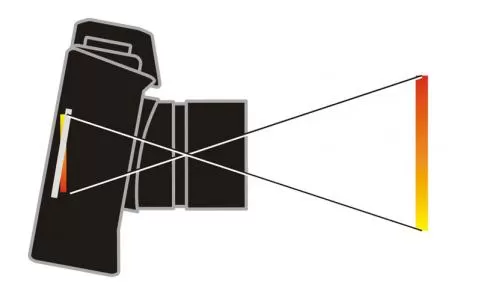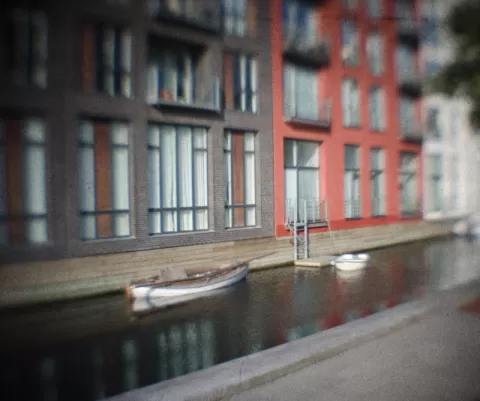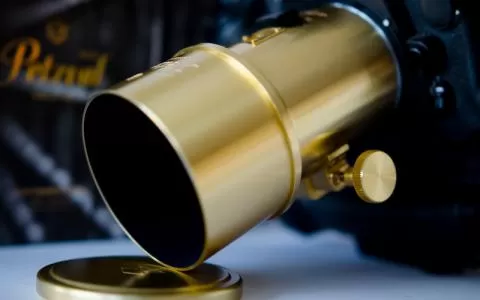Part 2: Arax/Photex 85mm f/2.8 tilt/shift
I recently acquired a tilt/shift lens and was scooting around the web to find some info about these rather strange contraptions. I found very little. Few people use these fairly exotic and expensive lenses, and it seems that even fewer have taken the time to write about them. I found a few reviews but preciously few how-to's—actually none that appealed to me.
I'll try to make that better by bringing you through my experiences with my new lens. I have already tried to explain what T/S lenses can do and how they work in the first T/S article.
Let me tell you what I bought and how that came about.
Miniatures
I had long had my eyes on a T/S lens sometimes referred to as a PC lens for Perspective Correction – although PC lenses don't necessarily tilt.
The North Wind Blew South from Keith Loutit on Vimeo.
My primary motivation was the so called “miniature” effect where the altered focus plane of the tilt-function is used to make things appear as small model train landscapes. You have probably seen it both in stills and in one of the many stop-motion videos found out there. My own favorites are Vincent Laforet's many stills (tennis court, airport, NY aerials) and Kieth Louditt's fascinating stop motion videos, mainly A North Wind Blew South, but there are numerous other examples.
Nikon PC
I had my eyes out for an original Nikon PC lens, but honestly! Almost 2,000.- USD for a lens that I will most likely use very rarely! That's crazy even in spite of the fact that these lenses are really (like REALLY!) nice lenses and complex too. Nikon has three: a 24mm, a 45mm and an 85mm. I would have no idea which one to buy, even if I wanted to spend the money.
I started looking for a used copy in the local classifieds, but although the few lenses I found were about half price, I still found it a little steep.
So I ventured on a research trip on the web and found several alternatives. One of my favorite companies, Lensbaby, makes a tilt-adapter for Nikon lenses, but to fit on a 4/3 camera—not on a Nikon body, and I have no 4/3 body.
Alternatively I could acquire a tilt-adapter that would let me mount large format lenses on a Nikon, but I have no Hasselblad or other 6x6 lenses, and buying such lenses can also mean parting with quite hefty sums.
Arax/Photex from Ukraine
Underway I stumbled over two names a few times: Arax/Photex and Hartblei. These two companies, both Ukrainian, seemed to make T/S-lenses more suitable to my budget. Hartblei seemed to be the better of the two, but a new lens from them would cost the same as a used Nikon, which was still a little too much for me. Arax/Photex was the least expensive, so I wound up ordering an Arax/Photex PC 80mm f/2.8 from Ukraine.
Ordering gear for 370.- USD plus postage from Ukraine is kind of a chance to take in my eyes, but I figured that buying through eBay/Paypal would give some insurance, and if I was to loose the money it was bearable.
I got a confirmation shortly after ordering, and a US Postal track and trace number the day after, so that was pretty reassuring. The package arrived after 8 days, and the lens had actually not been mailed from Ukraine, but from Atlanta, Georgia in the US! No hassle at all. Mister Postman delivered it in the door, and I was the happy owner of a tilt-shift lens!
The lens
I immediately mounted it on my D300s and went out on our balcony and shot a few shots. It's a fully manual lens, meaning that everything is manual: focus, aperture and exposure. The D300s can measure the light and expose correctly when you stop down the lens, but I honestly find it easier to go fully manual and guesstimate the settings. I have only used the lens full open at f/2.8 until now, but stopping down means setting the aperture ring and then turning another ring to engage the iris. Quite easy and convenient, although not nearly as nice as the new Nikon T/S lenses, which can stop down automatically thanks to a neat magnet driven system.
The quality of the lens is a reminder of times long gone. It's all metal and has real screws in it! The mechanics are crude but precise and work as you would expect. The focus, aperture and tilt and shift screws are not silky smooth, but not tight or uneven either. The optical quality of the lens seems OK. It's not an 85mm f/1.4 or even an f/1.8, but then again: few lenses are!
There are several issues with this lens, which I'm certain that shelling out more money would have spared me, but none that make it impossible to use.
One pretty severe issue is that the lens won't lock when mounted on the camera! That means that I can simply turn the lens loose without pressing the lens release button on the body. Not good! Since rotating the lens on the camera is an important part of using it, this is a very annoying error. My guess is that 10 minutes with a fine metal file will solve the problem, which is simply a result of sloppy production and very sloppy quality control. This lens has probably never been mounted on a camera for test before it left the production line, which is the price for getting things cheaply from Ukraine.
The second issue is that parts of the lens will bump into the front of viewfinder when it's rotated while being shifted or tilted to certain positions. This is quite a bother when you turn the camera from landscape to portrait orientation and want the lens to remain tilted as it was. But “untilting” it, turning and then tilting it again can solve the problem.
I'm not an architectural photographer as such. I like to shoot cityscapes and buildings, but tend to exaggerate their shapes rather than trying to depict them as correctly as possible. And my 80mm is actually so long that I rarely get any distorting keystone effect, so I don't use the shift function much.









